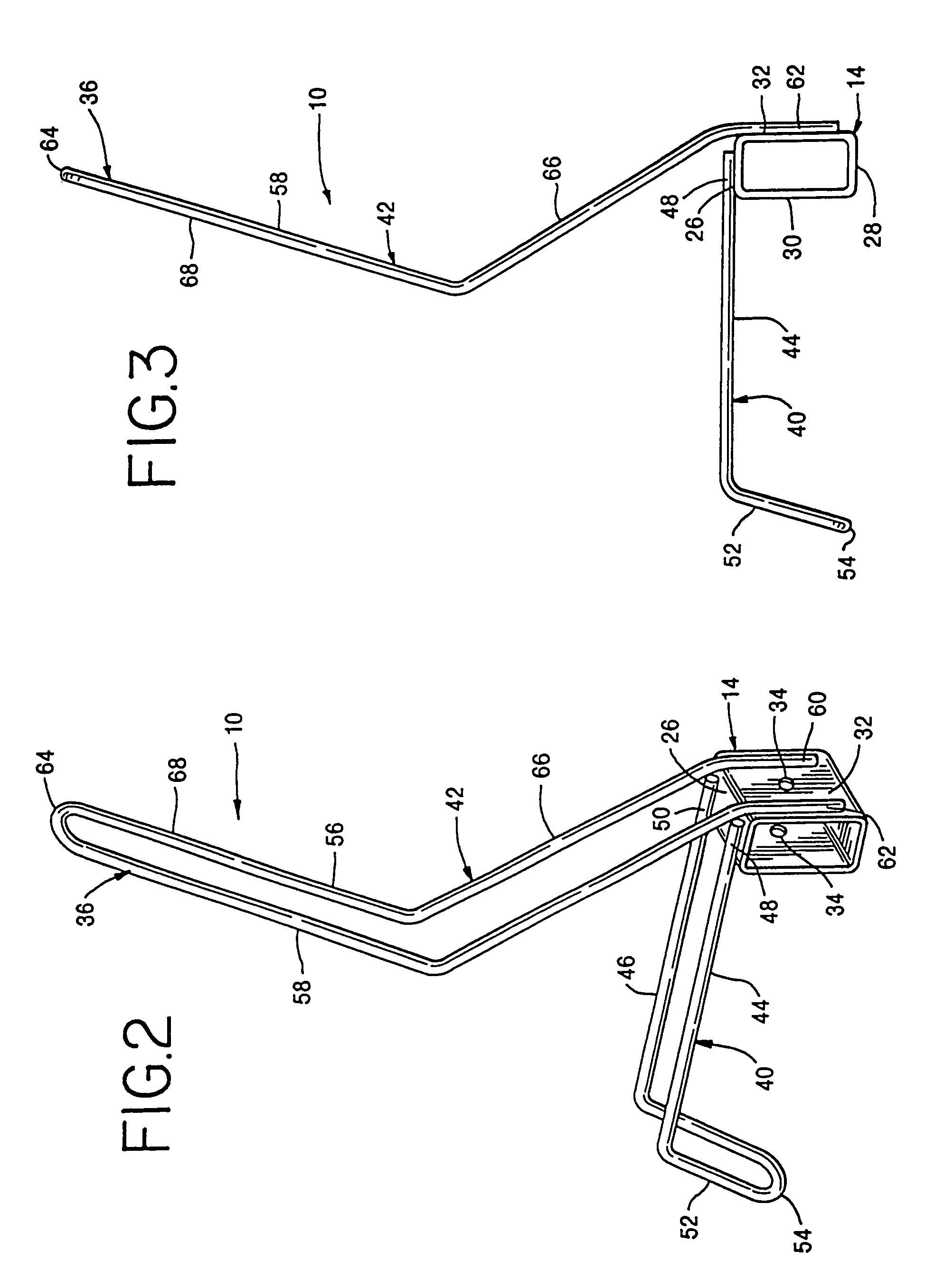Bicycle rack
a bicycle rack and bicycle technology, applied in the field of bicycle racks, can solve the problems of damage to bicycles, heavy structure, and lack of kick stands for reducing weight and increasing performance, and achieve the effects of quick and easy sliding, quick and easy disassembly and storage, and easy lifting
- Summary
- Abstract
- Description
- Claims
- Application Information
AI Technical Summary
Benefits of technology
Problems solved by technology
Method used
Image
Examples
Embodiment Construction
[0022]The invention disclosed herein is, of course, susceptible of embodiment in may different forms. Shown in the drawings and described hereinbelow in detail are preferred embodiments of the invention. It is to be understood, however, that the present disclosure is an exemplification of the principles of the invention and does not limit the invention to the illustrated embodiments.
[0023]For ease of description, a bicycle rack embodying the present invention is described as shown in the accompanying drawings where the rack is fitted on a support member which is seated on a generally horizontal support surface and terms such as upper, lower, horizontal, vertical, etc., will be used herein with reference to this position as shown in the drawings.
[0024]Referring now to the drawings and more particularly, to FIGS. 1–3, there is shown therein a bicycle rack 10 constructed in accordance with the present invention for holding a bicycle 12 in an upright, parked position relative to a bicyc...
PUM
 Login to View More
Login to View More Abstract
Description
Claims
Application Information
 Login to View More
Login to View More - R&D
- Intellectual Property
- Life Sciences
- Materials
- Tech Scout
- Unparalleled Data Quality
- Higher Quality Content
- 60% Fewer Hallucinations
Browse by: Latest US Patents, China's latest patents, Technical Efficacy Thesaurus, Application Domain, Technology Topic, Popular Technical Reports.
© 2025 PatSnap. All rights reserved.Legal|Privacy policy|Modern Slavery Act Transparency Statement|Sitemap|About US| Contact US: help@patsnap.com



